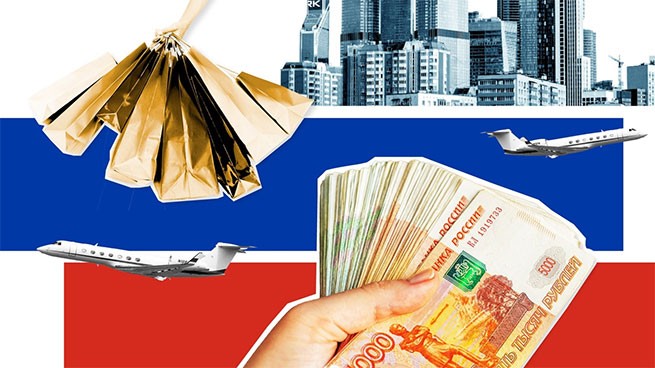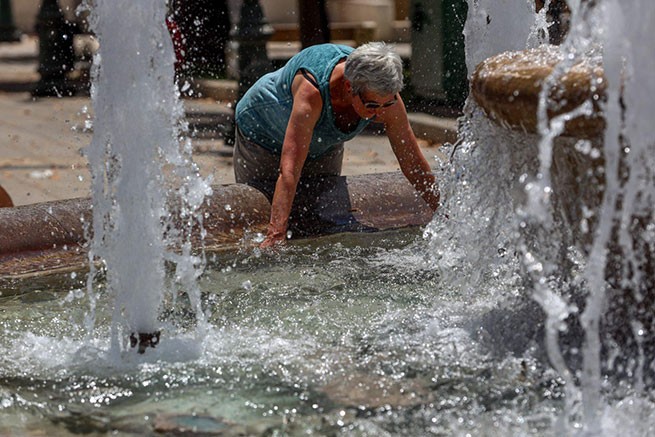The Christmas table this year will be 15% more expensive compared to Easter, when meat prices are already quite high.
However, according to official figures from the Consumer Product Research Institute (IELKA), the average price of food for a traditional Christmas table has increased this year compared to 2020.
From the report of the “Dnews” edition from the central market of Athens, it follows that the price per kilogram of goat meat reaches 12 euros, lamb – 10.5 e, beef fillets are sold at 8.5 e and turkey from 7 to 8 euros. The only meat product, the price of which has remained at the same level as last year, is pork (pork shank) at the price of 5 euros and meat with bones at 4.5 euros.
“This time we’ll cook fricassee or bake pork in the oven. It can be seen that the financial situation of consumers is difficult. We also need to sell the meat as we will be closed next two weekends for Christmas and New Years, ”says the butcher.
As for the traffic in the central market of Athens “Varvakio Agora”, it is still limited, there is no large crowd of people. The butchers believe there won’t be much demand due to rising prices, although other sellers are less pessimistic, especially around Christmas and New Years Eve.
However, according to official figures from the Consumer Product Research Institute (IELKA), the average price of food for a traditional Christmas table has increased this year compared to 2020.
The IELKA report provides an analysis of food prices in large supermarket chains in Greece. It is based on invoices from large supermarket stores conducted by IELKA researchers (13-15 / 12) and information received from market leaders in terms of pricing-forecasting the week before Christmas.
The study focuses on 22 typical food categories included in the Christmas table (kurabiye and melomakarona cookies, traditional pie, turkey, lamb, chestnuts, eggs, potatoes, fruits, vegetables).
According to the study’s findings, the prices of the typical Christmas table food (if shopping in large supermarket chains) in 2021 increased by an average of 5% compared to 2020, while the cost increased by 1% from the highest price. registered in 2015. In particular, the standard “consumer Christmas basket” is estimated at 86.18 euros in 2021, up from 81.81 euros in 2020.
It is noted that in recent years in large supermarket chains there are good offers, promotions and discounts that allow the consumer to choose and save on average about 13% of the cost of their purchases. At the same time, if you approach purchasing wisely, the savings can even reach 21% of the cost of the “basket”.
Out of 22 considered subcategories of products, the largest price increase was recorded for mutton – by 24%, the price of which remains even higher than on Easter. The biggest drop in prices is noted for tomatoes – by 25%, which is associated with favorable weather conditions. The average range of prices for goods remains elevated and is estimated at about 35-38% of their value.
In general, this Christmas, 1 out of 2 products will be offered to consumers “at a discount”, thanks to promotional events, additional “interesting” offers for products (for example, a 2 + 1 gift), issuance of coupons, gift certificates, etc.
The rise in prices is explained by the fact that for several months in a row there has been a sharp increase in the cost of energy resources, and then everything along the chain becomes more expensive, especially imported goods. The International Food Index remains significantly higher than it was before the COVID-19 pandemic. All sub-indices show growth for cereals, oils, meat, dairy products and sugar.
In a survey conducted by IELKA in November-December 2021, most consumers associate price increases with world raw material prices (by 53%) and the COVID-19 pandemic (by 32%).
The IELKA report provides an analysis of food prices in large supermarket chains in Greece. It is based on invoices from large supermarket stores conducted by IELKA researchers (13-15 / 12) and information received from market leaders in terms of pricing-forecasting the week before Christmas.
The study focuses on 22 typical food categories included in the Christmas table (kurabiye and melomakarona cookies, traditional pie, turkey, lamb, chestnuts, eggs, potatoes, fruits, vegetables).
According to the study’s findings, the prices of the typical Christmas table food (if shopping in large supermarket chains) in 2021 increased by an average of 5% compared to 2020, while the cost increased by 1% from the highest price. registered in 2015. In particular, the standard “consumer Christmas basket” is estimated at 86.18 euros in 2021, up from 81.81 euros in 2020.
It is noted that in recent years in large supermarket chains there are good offers, promotions and discounts that allow the consumer to choose and save on average about 13% of the cost of their purchases. At the same time, if you approach purchasing wisely, the savings can even reach 21% of the cost of the “basket”.
Of the 22 considered subcategories of products, the highest price increase was recorded for mutton – by 24%, the price of which remains even higher than on Easter. The biggest drop in prices is noted for tomatoes – by 25%, which is associated with favorable weather conditions. The average range of prices for goods remains elevated and is estimated at about 35-38% of their value.
In general, this Christmas, 1 out of 2 products will be offered to consumers “at a discount”, thanks to promotional events, additional “interesting” offers for products (for example, a 2 + 1 gift), issuance of coupons, gift certificates, etc.
The rise in prices is explained by the fact that for several months in a row there has been a sharp increase in the cost of energy resources, and then everything along the chain becomes more expensive, especially imported goods. The International Food Index remains significantly higher than it was before the COVID-19 pandemic. All sub-indices show growth for cereals, oils, meat, dairy products and sugar.
In a survey conducted by IELKA in November-December 2021, most consumers associate price increases with world raw material prices (by 53%) and the COVID-19 pandemic (by 32%).






More Stories
Digital Currencies: Global Control or New Opportunities? What's Behind the Introduction of Digital Money
BRICS + ACEAN: A New Era of World Currencies
How much does a square meter of housing cost in the Cyclades